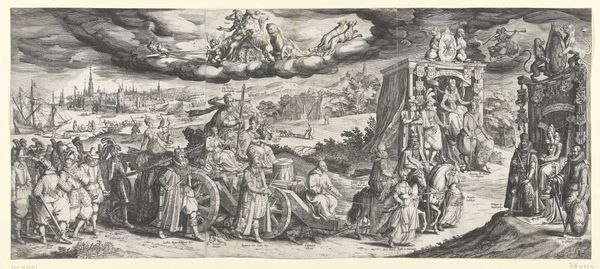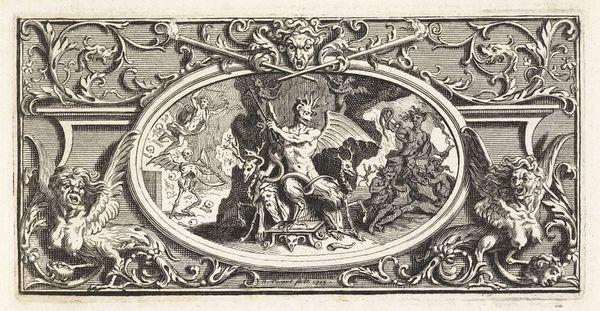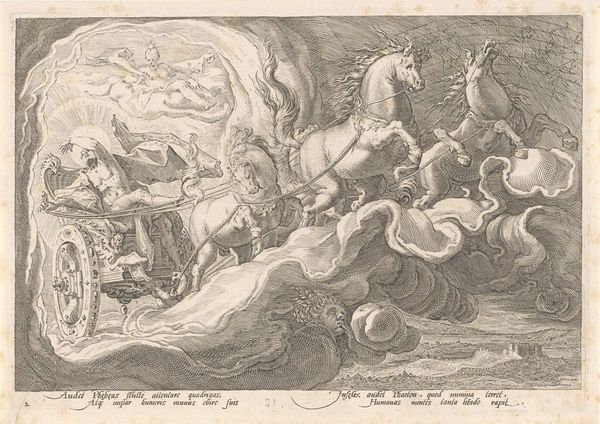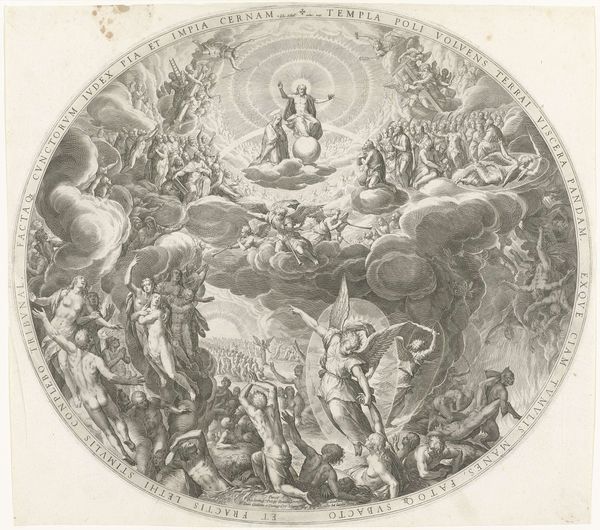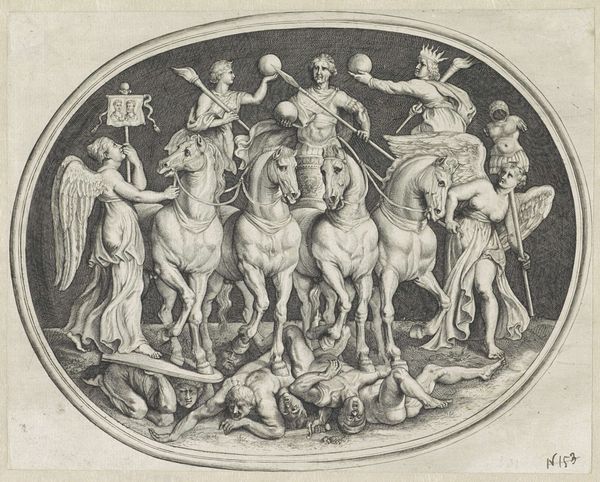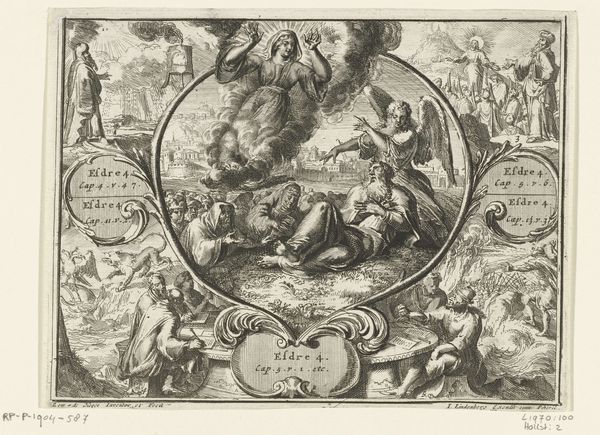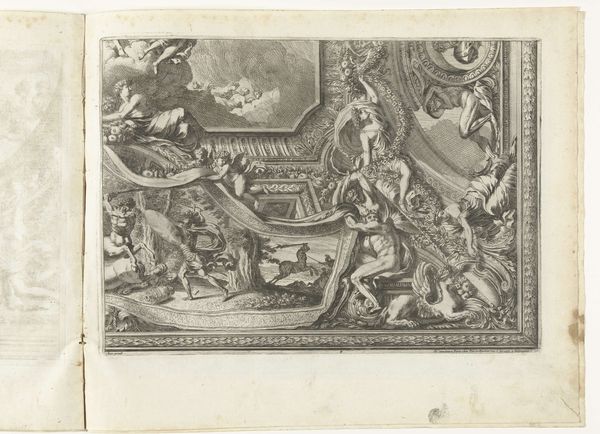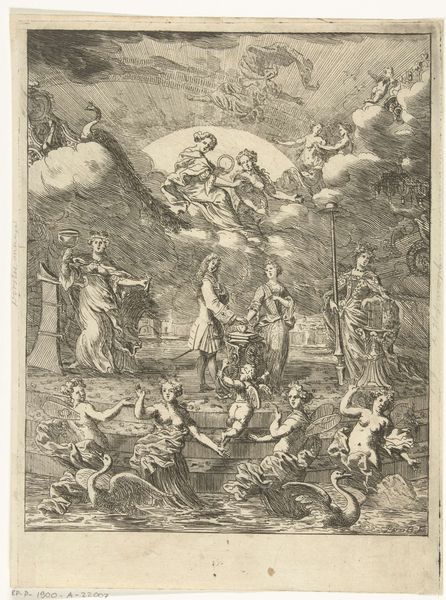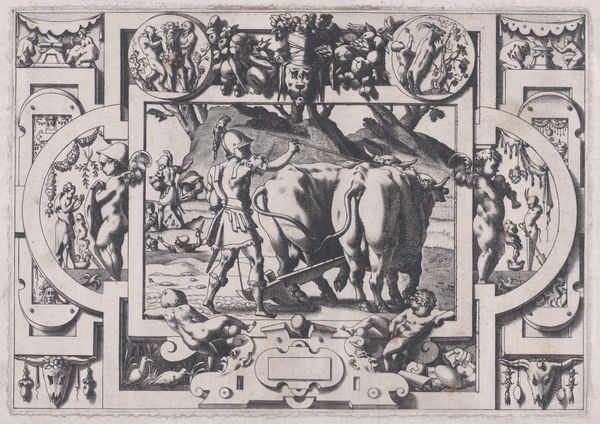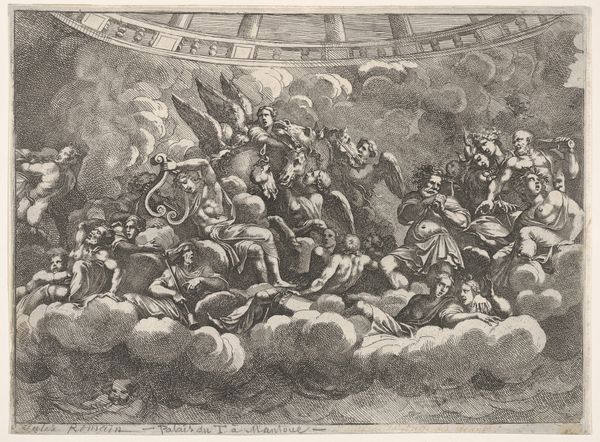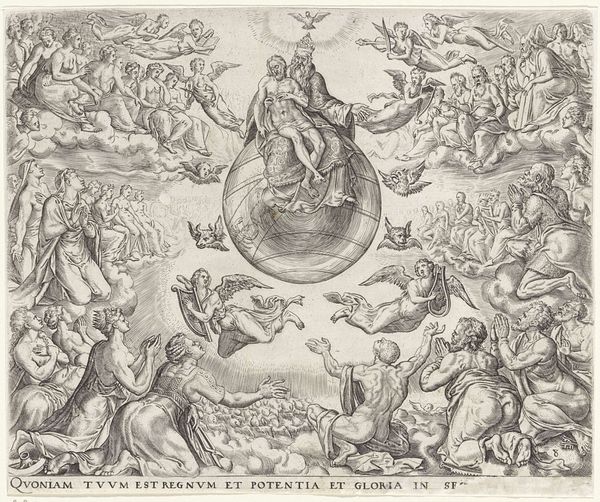
print, engraving
# print
#
landscape
#
mannerism
#
figuration
#
mythology
#
engraving
Dimensions: width 304 mm, height 219 mm
Copyright: Rijks Museum: Open Domain
Curator: This engraving, dating back to circa 1578-1582, is titled "Apollo en de vier jaargetijden" - "Apollo and the Four Seasons" and was produced by Philips Galle. What are your initial thoughts? Editor: I’m struck by its rather unsettling energy. It has a chaotic, almost claustrophobic composition—an atmosphere of potent forces at play. Curator: Mannerism is known for that, isn't it? Galle uses the engraving technique to create a dense and detailed image. The swirling clouds and figures evoke the constant cyclical changing of time. I think if we zoom in, the real art is in how it's all etched, the materials. This image wouldn’t exist without a clear and masterful labor of production. Editor: Exactly! I read it as Galle grappling with the relationship between power, masculinity, and the natural world. Look at Apollo wielding those reins— it reflects the gendered hierarchies that structured the Renaissance, and those horses seem ready to revolt! The bodies framing the central image seem resigned to Apollo’s power. It’s like the artist’s interrogating how this all unfolds. Curator: I see what you're saying. Galle was prolific; he was printing works that were then distributed and consumed widely. In his workshop he had all the components of what would be a major change in what, how, and who gets access to art in general. Editor: Yes, that act of dissemination—of taking classical mythology and reinterpreting it through a very specific cultural lens— speaks volumes about art’s function as a tool for cultural discourse. This makes us think about the context of its consumption as well. Was it subversive, compliant, or something in between? It offers so much in terms of visual culture in the 16th century. Curator: Well, it also feels like Galle is interested in classical myth in relation to labour. Apollo in his chariot – an image of productivity; we're dealing with seasonal labor and the cyclical process of growth. Editor: It highlights art's crucial role as a site where social narratives are not just replicated, but also negotiated and potentially challenged, reflecting how the human figure and power can reflect complex intersectional understandings. Curator: In terms of craft and creation, what a detailed engraving. It invites discussion of both the tangible and symbolic. Editor: Ultimately, what is it about Galle’s print that still resonates? Perhaps that constant tension between domination and surrender it depicts is universal.
Comments
No comments
Be the first to comment and join the conversation on the ultimate creative platform.

